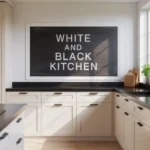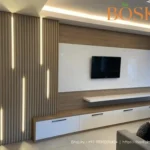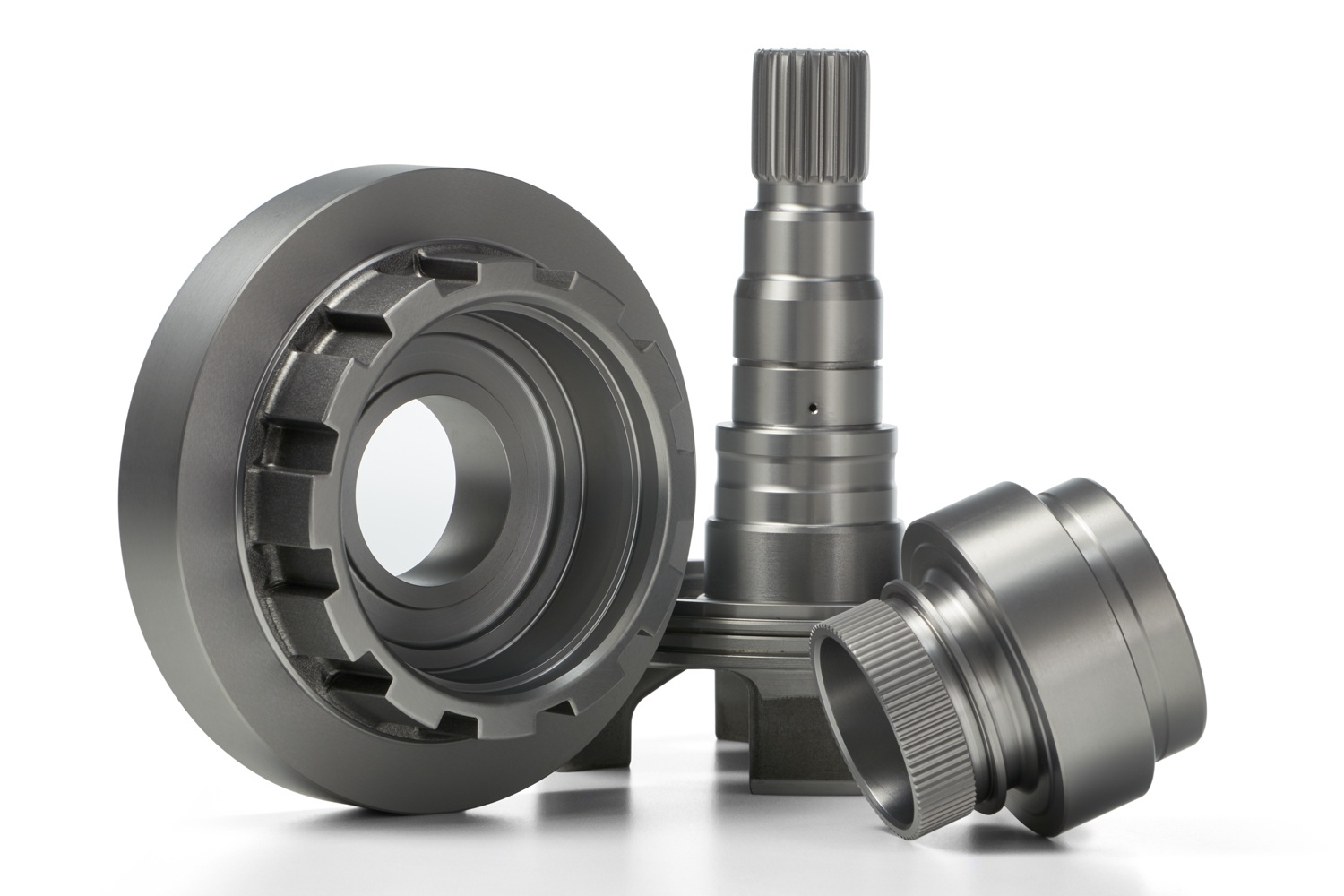When you walk into a beautifully designed room, the walls often set the tone before any furniture does. The right texture types for drywall can instantly transform a plain wall into a design statement adding depth, warmth, and personality to your space.
As a home décor enthusiast who’s helped dozens of clients update their interiors, I’ve seen how a well-chosen wall texture can completely change the vibe of a home. From subtle patterns to dramatic finishes, drywall textures are more than just visual appeal; they’re practical, too.
In this guide, we’ll explore the different texture types for drywall, discuss where each one shines best, and share a real-life homeowner story to help you decide which style suits your space.
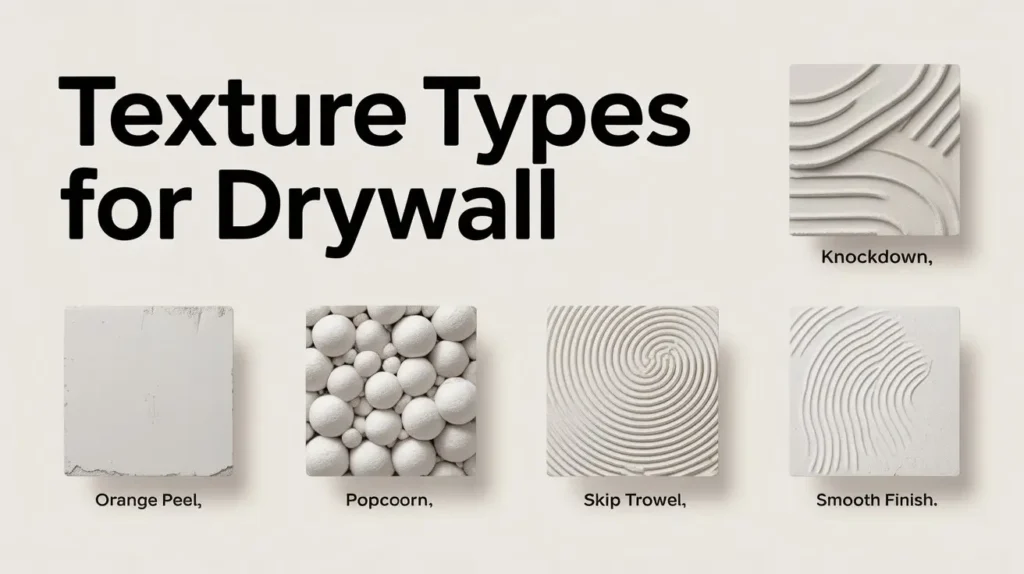
Content
What Is Drywall Texture and Why Does It Matter?
Before diving into the many drywall texture finishes, it’s helpful to understand what they do. Drywall texture refers to the finishing technique applied to walls or ceilings after the drywall has been installed. It’s created by applying joint compound (mud) or plaster and manipulating it with brushes, knives, or sprayers to form patterns.
Aside from aesthetics, textures help:
- Hide imperfections in drywall installation
- Add depth and character to plain walls
- Enhance light reflection for mood and warmth
Whether you prefer a smooth or textured drywall wall, the right finish can bring life to your home and even increase its value.
The Most Popular Texture Types for Drywall
Let’s explore the different drywall textures for modern homes, each with its own character and charm. These finishes vary from traditional to trendy giving you plenty of options to express your style.
1. Orange Peel Texture
Named after the skin of an orange, this subtle finish is one of the most popular drywall textures for both walls and ceilings. It’s achieved by spraying watered-down joint compound to create small bumps that slightly resemble orange peel.
Best For: Living rooms, hallways, and bedrooms
Why It Works: Adds softness and hides minor flaws without feeling dated.
Tip: If you love minimalist interiors, orange peel gives you texture without overwhelming the design.
2. Knockdown Texture
This texture starts like orange peel but is flattened (or “knocked down”) with a trowel once it dries slightly. The result? A more rustic and natural look that blends seamlessly with almost any décor style.
Best For: Open-plan homes, dining areas, and hallways
Why It Works: Ideal for homeowners who want a lived-in yet elegant feel.
Among all texture types for drywall, knockdown is a personal favorite; it gives your walls depth and hides imperfections beautifully.
3. Popcorn Texture
Once a common choice for ceilings, the popcorn texture has a distinctive bumpy appearance. While it’s less common today due to modern preferences, it still offers excellent sound absorption.
Best For: Ceilings, media rooms, and basements
Why It Works: Reduces noise and hides ceiling imperfections.
Note: Popcorn textures applied before 1980 may contain asbestos, always consult a professional before removal.
4. Skip Trowel Texture
Elegant and timeless, skip trowel texture is created by spreading joint compound in thin layers with a curved knife, creating a hand-finished, Mediterranean-style effect.
Best For: Living rooms, entryways, and master bedrooms
Why It Works: Adds old-world charm to modern or rustic homes alike.
5. Sand Swirl Texture
This texture combines swirling patterns and fine sand for a soft, dimensional look. It’s less common today but remains a beautiful choice for homeowners who want something artistic yet calming.
Best For: Ceilings and accent walls
Why It Works: Offers a gentle texture that reflects light beautifully.
6. Comb Texture
The comb texture uses a toothed trowel to create symmetrical patterns like waves or arches. It’s a creative way to make a statement wall without bold paint or wallpaper.
Best For: Dining rooms or feature walls
Why It Works: Adds a sense of movement and visual rhythm.
7. Lace Texture
The lace drywall texture, often seen in southwestern homes, features intricate, lace-like patterns. When painted, it offers an elegant, layered look.
Best For: Ceilings and formal living spaces
Why It Works: Perfect for homeowners looking for artistic detailing with timeless appeal.
How to Choose the Right Texture for Your Home
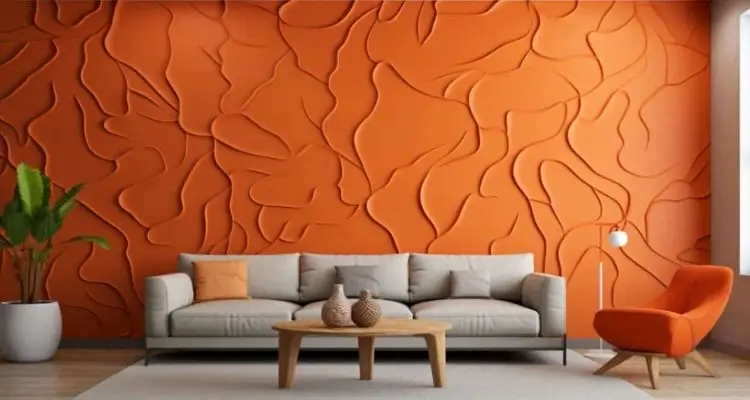
With so many types of wall textures, how do you pick the one that fits your space? Here’s a quick guide:
- Style of Home: Modern homes suit smoother finishes like orange peel or knockdown, while rustic homes benefit from skip trowel or lace textures.
- Maintenance Needs: Simple textures are easier to clean and repaint.
- Lighting: Bright rooms highlight textures more — so subtle finishes often work better.
- Application Method: Sprayed textures are faster, while hand-applied styles offer uniqueness.
When deciding how to apply texture types for drywall, consider whether you’re doing it yourself or hiring a pro. Spraying is efficient but needs the right equipment; hand-applied finishes require patience but give a custom touch.
DIY vs. Professional Finishing
If you’re a confident DIYer, start by experimenting with smaller areas especially with spray-on finishes. However, for larger projects, intricate textures like lace or skip trowel, or fixing plaster walls, hiring a professional drywall finisher ensures precision and lasting results.
From my experience, drywall finishing styles can make or break a room’s first impression. Even the best paint can’t disguise poor texture or uneven plaster work, so take your time or bring in an expert when needed.
Real-Life Case Study: How Texture Transformed Emily’s Home
A few years ago, one of my clients, Emily, wanted to refresh her 1980s Denver home without a full remodel. Her walls were plain and showed years of wear. We explored various drywall texture types for ceilings and walls to add character.
Here’s what we did:
- Living Room: Knockdown texture for a modern yet cozy vibe
- Ceiling: Light orange peel texture for subtle contrast
- Hallway Accent Wall: Skip trowel for an artisanal touch
The result? Her once flat, dull rooms felt layered, sophisticated, and warm. Even without changing her furniture, the textures alone elevated her interior design.
Emily later told me, “It feels like a completely new home. People always comment on how detailed the walls look!”
This case proves how thoughtful texture types for drywall can completely redefine your space.
Pros and Cons of Different Drywall Textures
| Texture Type | Pros | Cons |
| Orange Peel | Subtle, modern, hides flaws | Harder to patch perfectly |
| Knockdown | Durable, stylish | Needs skilled application |
| Popcorn | Great soundproofing | Outdated look |
| Skip Trowel | Artistic, classic | Time-consuming |
| Lace | Elegant and decorative | More expensive |
| Sand Swirl | Unique, gentle pattern | Harder to replicate |
Understanding the pros and cons of different drywall textures helps you make an informed choice balancing aesthetics, maintenance, and longevity.
Unique Drywall Texture Ideas for Homeowners
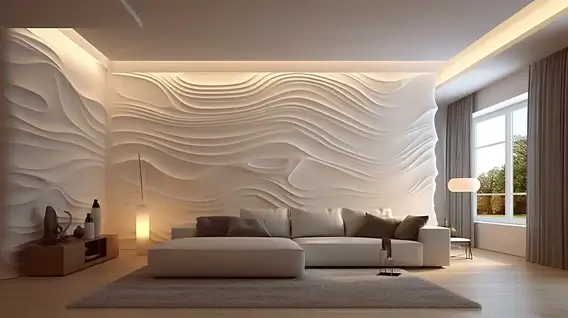
If you love experimenting, try combining finishes:
- Orange Peel + Knockdown: Modern yet slightly rustic
- Lace on Ceilings + Smooth Walls: Elegant and balanced
- Sand Swirl Accent Wall: Perfect for cozy bedrooms
These unique drywall texture ideas for homeowners bring personality into every corner, helping your walls tell a story beyond paint color.
Conclusion:
Wall texture is often overlooked, yet it’s one of the most powerful design tools for creating a style statement with an accent wall. Whether you love the subtle sophistication of orange peel or the artistic flair of lace, your walls deserve just as much attention as your décor.
Choosing the right texture types for drywall allows you to express your personal taste, enhance your home’s value, and design a space that feels uniquely yours.
So, the next time you plan a makeover, remember paint adds color, but texture adds character and style.
FAQs About Drywall Textures:
What is the most common drywall texture type?
Orange peel and knockdown are the most common texture types for drywall used in modern homes.
Can I paint over textured walls?
Yes, use a high-quality primer first for even coverage.
What’s the best drywall texture for living rooms?
Knockdown or orange peel textures offer warmth and elegance.
Can I remove old popcorn ceilings myself?
Only if it’s asbestos-free. When in doubt, hire a professional.

I’m Steve Hembree. I love to share my tips and tricks for home improvement, as well as provide ideas for how you can transform your space with DIY projects.


